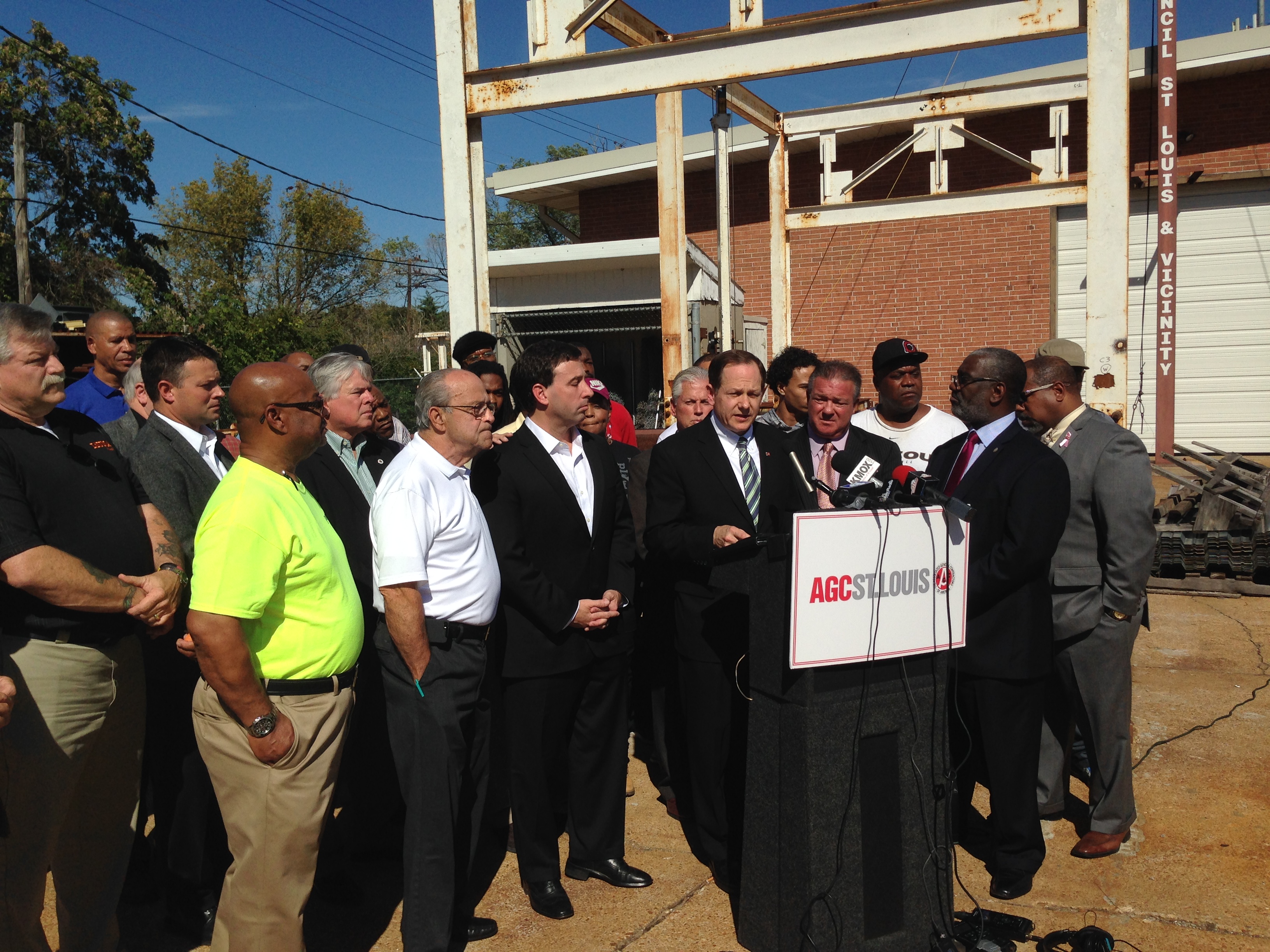Saint Louis, Mo. — Over the next few months and years, unions around St. Louis are making a concentrated effort to expand their worker base and recruit more women and minority workers, union leaders told The Missouri Times.
Earlier this week, Mayor Francis Slay and a cadre of union officials announced the Building Union Diversity program, a partnership between unions, contractors and the city to hire and train minority workers for union labor jobs.
The announcement was seen by many as a response to the protests in Ferguson, but the program is actually the product of a nearly yearlong negotiation between union representatives, contractors and city officials. And the program is the first step in what union leaders hope will be a revitalization of the relationship between their organizations and minorities.
“This is not at all a response to Ferguson,” said John Gaal, Ed.D, Director of Training and Workforce Development of the Carpenters District Council of Greater St. Louis. “This began last November. But in reality it’s a conversation that’s been had for years now. We’re seeing a skill shortage coming up and to move forward we need to be casting a wider net.”
Jeff Aboussie, Executive Secretary Treasurer for the St. Louis Building and Construction Trades Council, said that organized labor had a sometimes tense relationship with minorities in the past, but that the trend would be reversed.

“We can change the makeup of our construction trades,” Aboussie said. “Part of that change is to have the jobs being done reflect the makeup of the community they are done in.”
Gaal said that there was a self-awareness among most labor leaders that the lack of diversity was not only bad for communities, and bad for business.
“We’re seeing more and more public, quasi-public and even private jobs with these bid specifications on minority workforce or women workforce, and that’s something that’s becoming second nature to this business,” Gaal said. “I heard someone say in Washington D.C. once that our industry was ‘pale, male and stale,’ We can’t afford that. Most of these guys know that this is not only the right thing to do, but the right time to do it.”
The B.U.D program is funded by federal grant money, though Aboussie said that before the money was assured, unions around the state were prepared to provide funding.
Once a minority worker is cleared by the St. Louis Agency on Training and Employment (SLATE) to begin the program, a participant will spend one week training in various trades of participating unions. Bricklayers, iron workers, electricians, plumbers, pipe fitters, and carpenters are all providing their own instructors to the program.
“Unions don’t hire anyone, we train them and we make them available,” Aboussie said. “So who better to train these guys than our instructors?”
The inaugural B.U.D. class just began earlier this week, and upon completion, students will meet with program instructors to discuss the trade that is the best fit, and each student will be given an interview to join the apprenticeship program of their trade.
The ultimate goal is one with mutual benefit for both parties. With more minority members, unions can swell their ranks and influence their local political and financial clout, and more full-time jobs with union benefits means higher financial standing for communities struggling with unemployment. Aboussie freely admits it’s a mutually beneficial relationship.
“[The inaugural class] is a huge marketing tool for us,” Aboussie said. “We want these folks to go back to their homes or families or churches and tell people about the work their doing and how it’s going to benefit their lives.”
All of the state’s construction unions will now begin assembling data on minority workers to determine availability and capacity in meeting minority-worker goals established by contractors, owners, and even city officials. The data will be kept in a central database and will help unions determine when and if the B.U.D program needs to be “ramped up.”
Washington University, BJC, and other major businesses in the area with a vested interest in contractors approached Aboussie about providing funding up front for the program. Aboussie said he’s hoping that in a few weeks, as the program begins to produce quality workers, he can approach more local heavy-hitters with a product to show off.
“I told folks to hold that thought and wait until they see this up and running,” Aboussie said. “We want you to invest in something, now just an idea of something.”
Historically, minority quotes have been met because a small number of construction trade unions had significantly higher numbers of minorities. Ironworkers and Teamsters traditionally hired larger numbers of minorities, while others lagged behind, and at times, openly discriminated.
“Demographics are changing,” Gaal said. “And if we want to remain a formidable presence and maintain our status, then we need to embrace those changes.”
But with open discrimination an increasingly distant memory, a new effort to expand diversity among organized labor is now one of the primary goals for men like Aboussie. As unions membership and, indeed, union clout, have faded in the last few decades, expanding the base of organized labor, as well as its appeal to formerly untapped markets, may prove an essential survival move.
“This is an idea we’re fully committed to now,” Aboussie said. “We want to change communities, remain competitive, and continue to train and organize some of the best workers in the country.”
Collin Reischman was the Managing Editor for The Missouri Times, and a graduate of Webster University with a Bachelor of Arts in Journalism.







